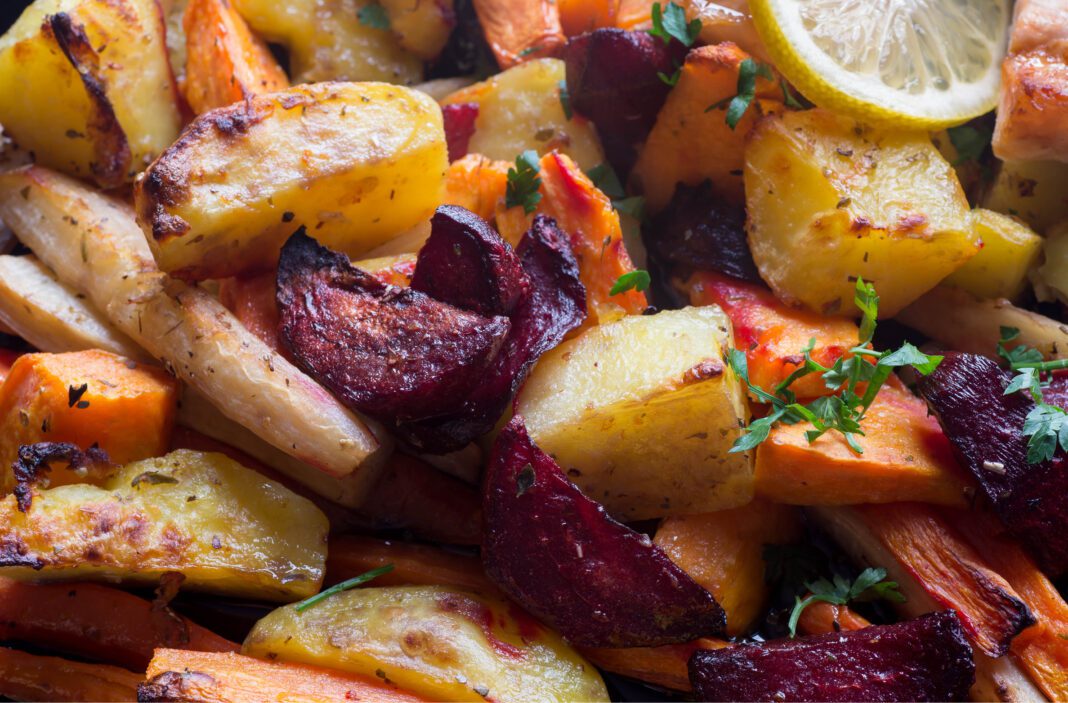Farm to fork solutions for bringing fresh produce to the dinner table
The farm-to-table lifestyle has never been more important, with consumers increasingly seeking fresh, locally grown produce for their supper table. But once you’ve got your hands on some tasty seasonal crops, what’s the best way to prepare them? To answer the question, we reached out to some local growers and BREADA members to get their tips on using their best-loved products. From roasted veggies to meaty mushrooms (and even an easy-to-follow recipe), the solutions you seek can be found below:
Oven Roasted Vegetables
Fullness Farms’ Allison Guidroz shares her go-to recipe for preparing her fresh vegetables, adapted from simplyrecipes.com.
Ingredients:
Fresh vegetables of any kind (think carrots, potatoes, sweet potatoes, broccoli, cauliflower—the options are endless!)
2 cloves garlic, roughly chopped (optional)
2 Tbsp. extra-virgin olive oil or avocado oil
1 tsp. kosher salt
½ tsp. ground cumin
½ tsp. ground coriander
½ tsp. ground turmeric
½ tsp. paprika
¼ tsp. red pepper flakes
Instructions:
Preheat oven to 425 degrees. Cover a large sheet pan with foil or parchment paper for easy cleanup.
Chop vegetables into uniform-size pieces (smaller pieces cook faster). Pile vegetables and garlic in center of pan. Drizzle oil over top. Add seasonings, then use your hands or a spoon to toss and coat vegetables with oil and spices. Spread veggies out evenly on pan; for maximum browning, they should not overlap. Roast for about 20 minutes, and check for tenderness. If vegetables have not reached desired tenderness, stir and return to oven; roast for an additional 5 to 10 minutes at a time until done. Serve right from the oven.
Mushrooms on the Menu
Oyster mushrooms are king at Mushroom Maggie’s. This most popular variety goes well will everything, as it absorbs the flavors of what you’re cooking. Sauté them in butter and garlic, adding salt and pepper to taste. Or roast them with olive oil and garlic and remove them from heat right before they burn. Another option is to chop them and add to a meat dish to stretch it out or make the fungi more palatable to picky eaters. “Our kids don’t even know they’re in there,” Maggie Long says.
Eco-Economics
Home economics starts in the kitchen and the garden, says Fullness Farm’s Grant Guidroz. A baby chick might cost a mere $1.50 but will grow up to lay 1,000 eggs. Lettuce and herbs take up little growing space and are easy to nurture. “Buy the best blueberry bush for $50 and it will produce bushels of blueberries,” he adds. “Mother Nature is making that deal. That’s a lot of bang for the buck.”
Seeds of Change
There are pepitas growing in North Baton Rouge. From a single plant, the Berhanes grew 100 Mexican pumpkins, the variety where the popular green seeds originate. Mila wields a machete to crack open one of the pumpkins, revealing the abundant seeds inside. “We roast these and grind them to make mole,” she says.
From Market to Mealtime
“People don’t realize how good farm-fresh vegetables are until they taste them!” says BREADA executive director Darlene Rowland. “I mean—
carrots and celery and tomatoes! Who knew celery leaves tasted so good, or that celery even had leaves?”
Rowland’s passion for the pickin’s at the Red Stick Farmers Market doesn’t stop with raw veggies. She makes her own stock for soups using the vegetable trimmings that remain after cooking vegetables. Great stock, she confides, makes great soup.
Her own young children, ages 7 and 9, also benefit from spending time at the market. “It has made a big difference for my kids,” she says. “They love using their money to buy things at the market. My 9-year-old makes himself a fried egg every morning in his personal cast-iron skillet. That’s pretty exciting to see.”
Struggling to get your own kids to try new foods like vegetables? Rowland says the key is to incorporate something fresh with every meal—even takeout. Consistency eventually leads to trying—and loving—new things. “You can get kids to enjoy fresh fruits and vegetables,” she says.
For more on these farms and what they bring each week to Baton Rouge via the BREADA Red Stick Farmers Market, check out our March 2023 cover story.












